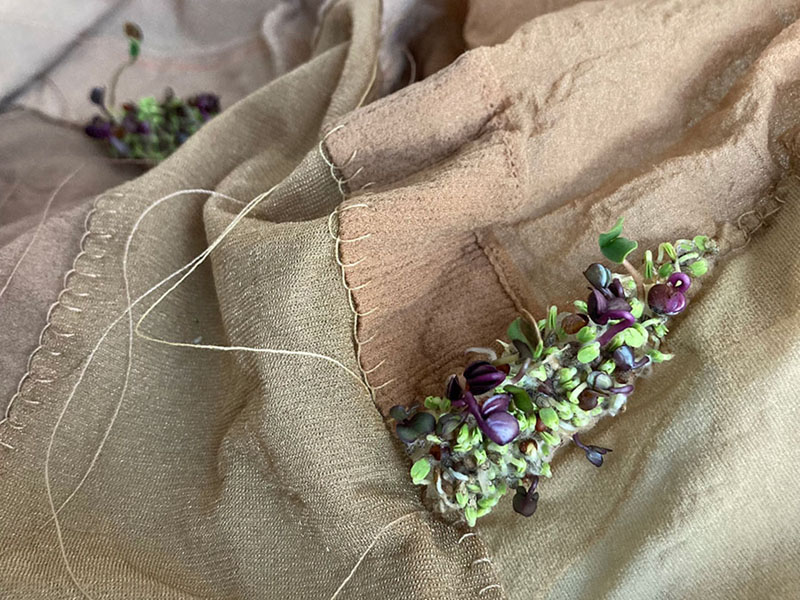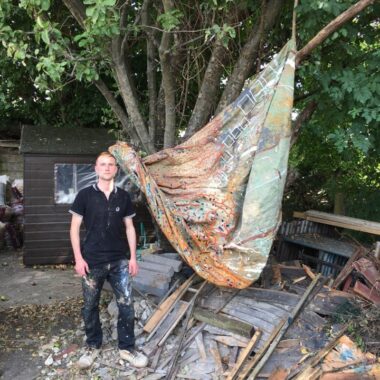I have to look after the seedlings and water them regularly. This ongoing care and maintenance takes time and patience, which is something that is often overlooked or undervalued in our society.
Sandra Crisp LG: “Your practice includes working with unique materials such as dust from your lived environment and also samples of your own hair. Interestingly, you mention that both these collected materials include your own DNA.
For the film, ‘Capsula’, ‘I performed an endoscopy on my vacuum cleaner to explore the traces of my body held within it’ – When installed in an exhibition 2020, the work could be viewed via a spyhole in a retro vacuum cleaner.
Processes are painstaking and precarious such as Giclée prints, ‘Remains (dust)’ 2019 and ‘Remains (hair)’ 2019 which present intricate images in the form of mandalas. More recently, your practice has begun to incorporate live seeds which will be great to hear more about.
I have always worked with organic materials in my practice and, a few years ago, I became fascinated by household dust and its intimate connection to the body, being largely made up of dead skin cells. (At the time skin was a site of trauma for me due to a painful skin condition which was aggravated by dust.) I had this moment when I realised that the vacuum cleaner was actually a repository for my DNA – that fragments of my body – my skin and hair – were regularly sucked into the stomach of this machine.
I wanted to explore the traces of my body that were being held within the vacuum cleaner and I decided to explore it in the same way that the inside of my body would be explored in a medical context using a medical procedure and medical imaging. This led me to perform an endoscopy on my vacuum cleaner which resulted in a film, ‘Capsula’, which take the viewer on a fictional journey into the hoover personified as my body.
Capsula, 2018 (moving image, 3m 4s)
More recently I have been experimenting with bringing live plant matter into my work. I read ‘A Seed in Statis’ by Kay Lewis Jones which talked about seeds as subversive agents with their ability to move, unnoticed into new places and wait for the optimum moment to sprout. That really spoke to me – thinking about just how subversive seeds have to be to get round all the concrete we’ve laid on the earth.
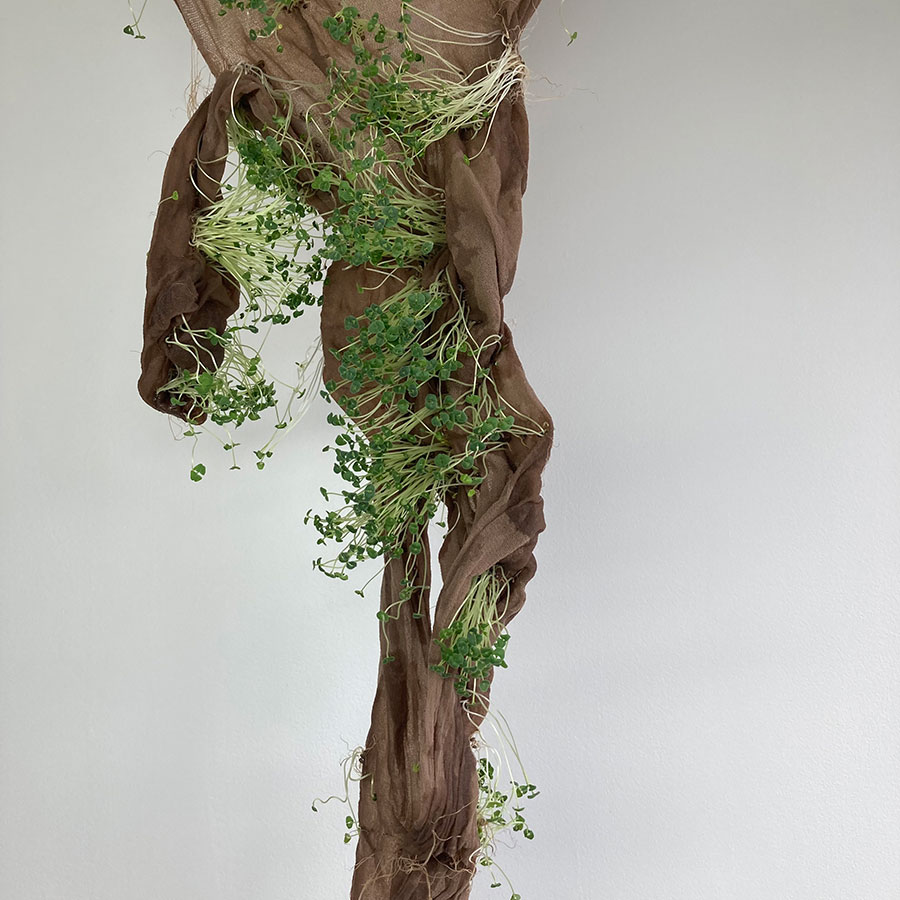
I started trying to grow different types of seeds on odd things (that still had some connection to the body where my practice centred before) including old knitted blankets, tights, netting and other hostile substrates. I don’t use a sketchbook but tend to work out my ideas directly with physical materials through lots of experimentation. Aspects of ‘failed’ experiments often resurface in later works.
I have been developing a series of patchworks made with used tights, with seedlings sprouting through the synthetic fabric. The process of sewing the pieces together is a form of mending (both materially and conceptually). I use blanket stitch which is traditionally sewn round the edge of material, marking an edge, or a separation. In these works I am using the blanket stitch to join and connect together rather than to contain and separate. For me, blanket stitch is also reminiscent of surgical stitching and scars – so there is that relationship to the body.
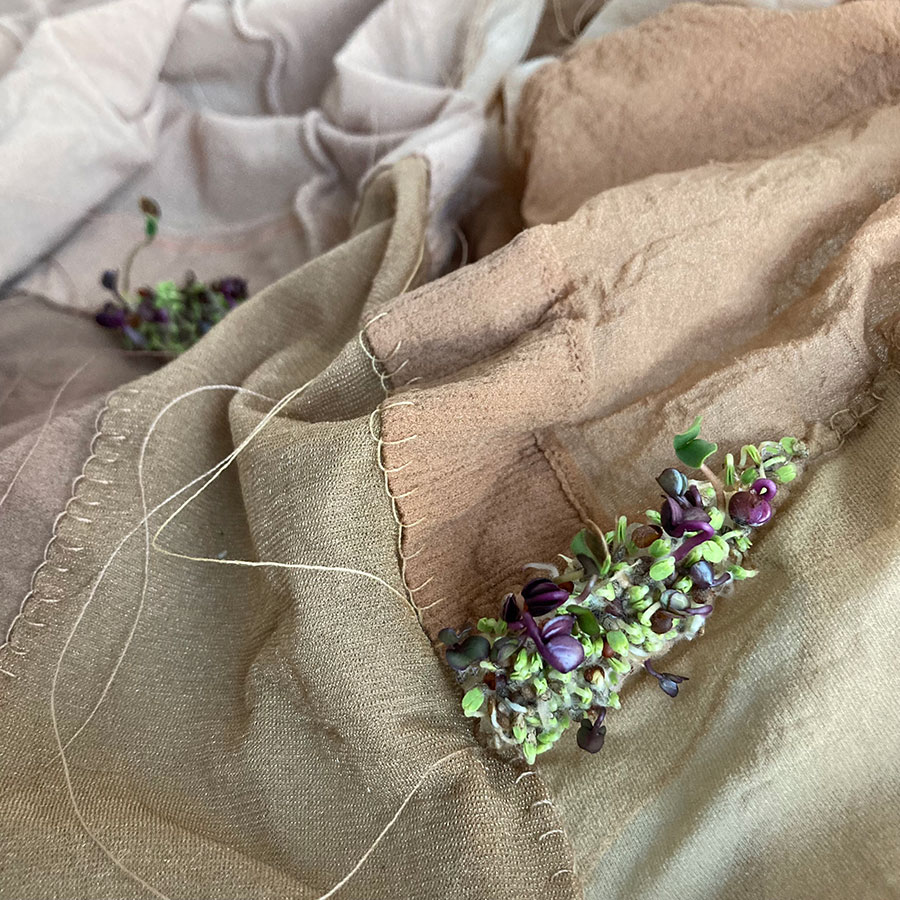

An important element of this living work is the tending that it requires – I have to look after the seedlings and water them regularly. This ongoing care and maintenance takes time and patience, which is something that is often overlooked or undervalued in our society. As they are durational works the passage of time and slowness also become important – you can’t rush seeds as they sprout and grow, they have their own timeframes – and that is something which I have appreciated becoming part of my practice.
Working with seedlings also brings a precariousness to the work. I’ve had an allotment for many years and through that time I’ve noticed that different crops flourish or fail each season, depending on the conditions. Nothing is certain. Bringing living plants into the work brings that element with it, which to me feels very relevant to the increasing precariousness of our existence.

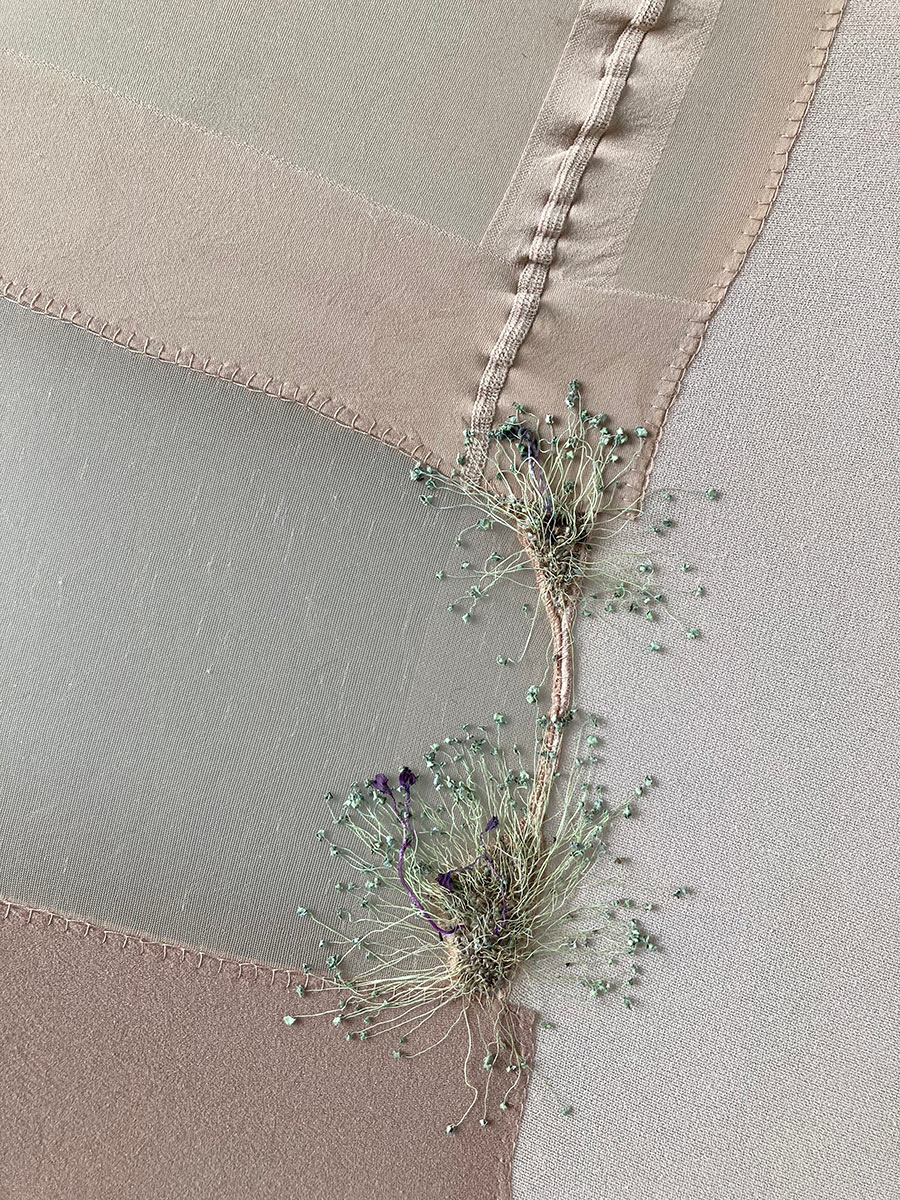
Beverley Duckworth LG
beverleyduckworth.com
see Duckworth’s latest work Residue in THE GALLERY
Current Exhibitions
Territoil, Art Hub Deptford, 19th – 24th May 2022
A Question of Process
#12 Aude Hérail Jäger
#13 Stephen Carley
